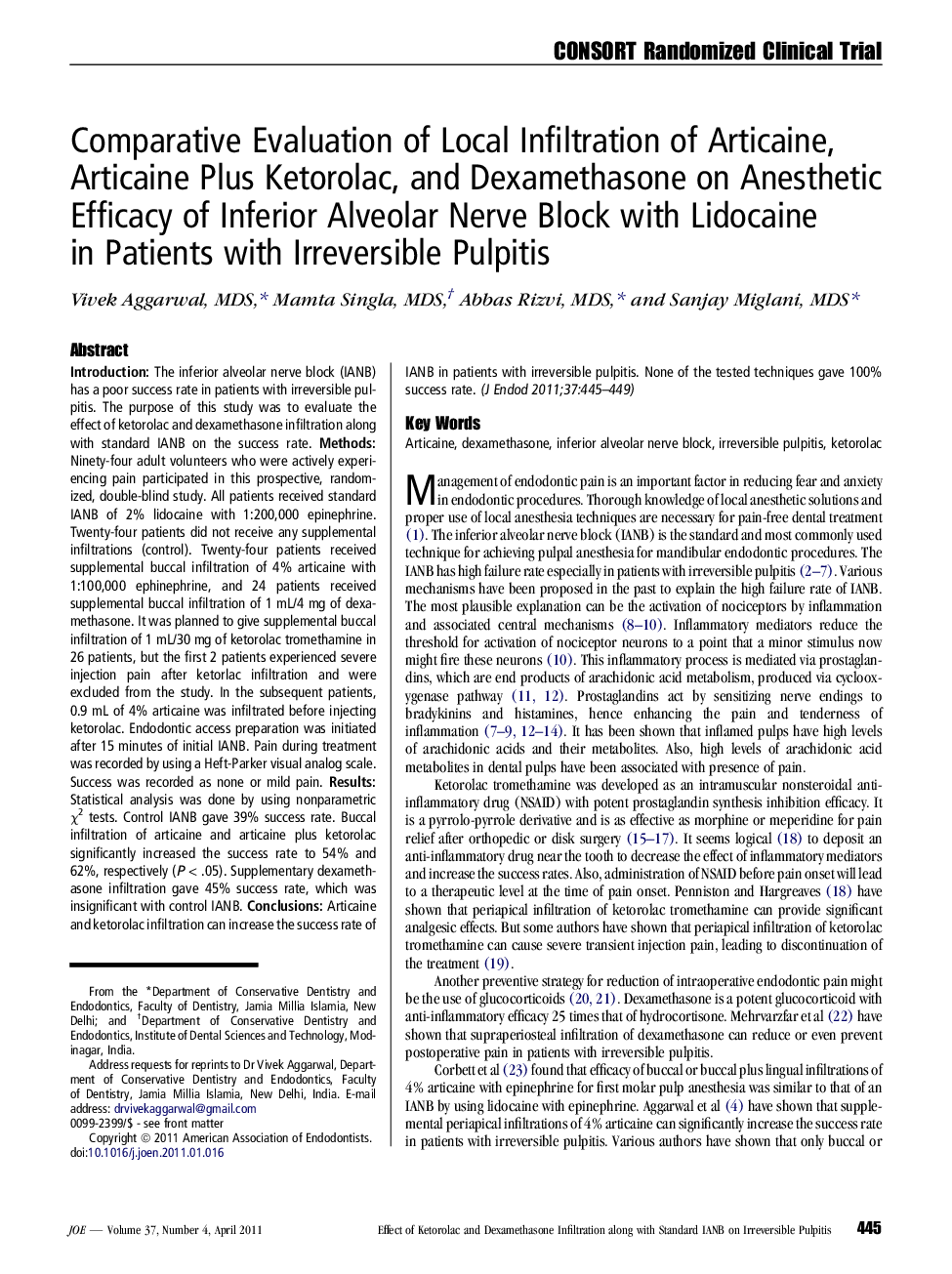| Article ID | Journal | Published Year | Pages | File Type |
|---|---|---|---|---|
| 6053914 | Journal of Endodontics | 2011 | 5 Pages |
IntroductionThe inferior alveolar nerve block (IANB) has a poor success rate in patients with irreversible pulpitis. The purpose of this study was to evaluate the effect of ketorolac and dexamethasone infiltration along with standard IANB on the success rate.MethodsNinety-four adult volunteers who were actively experiencing pain participated in this prospective, randomized, double-blind study. All patients received standard IANB of 2% lidocaine with 1:200,000 epinephrine. Twenty-four patients did not receive any supplemental infiltrations (control). Twenty-four patients received supplemental buccal infiltration of 4% articaine with 1:100,000 ephinephrine, and 24 patients received supplemental buccal infiltration of 1 mL/4 mg of dexamethasone. It was planned to give supplemental buccal infiltration of 1 mL/30 mg of ketorolac tromethamine in 26 patients, but the first 2 patients experienced severe injection pain after ketorlac infiltration and were excluded from the study. In the subsequent patients, 0.9 mL of 4% articaine was infiltrated before injecting ketorolac. Endodontic access preparation was initiated after 15 minutes of initial IANB. Pain during treatment was recorded by using a Heft-Parker visual analog scale. Success was recorded as none or mild pain.ResultsStatistical analysis was done by using nonparametric Ï2 tests. Control IANB gave 39% success rate. Buccal infiltration of articaine and articaine plus ketorolac significantly increased the success rate to 54% and 62%, respectively (P < .05). Supplementary dexamethasone infiltration gave 45% success rate, which was insignificant with control IANB.ConclusionsArticaine and ketorolac infiltration can increase the success rate of IANB in patients with irreversible pulpitis. None of the tested techniques gave 100% success rate.
